-
BackX
-
Components
-
-
Category
-
Semiconductors
- Diodes
- Thyristors
-
Electro-insulated Modules
- Electro-insulated Modules | VISHAY (IR)
- Electro-insulated Modules | INFINEON (EUPEC)
- Electro-insulated Modules | Semikron
- Electro-insulated Modules | POWEREX
- Electro-insulated Modules | IXYS
- Electro-insulated Modules | POSEICO
- Electro-insulated Modules | ABB
- Electro-insulated Modules | TECHSEM
- Go to the subcategory
- Bridge Rectifiers
-
Transistors
- Transistors | GeneSiC
- SiC MOSFET Modules | Mitsubishi
- SiC MOSFET Modules | STARPOWER
- Module SiC MOSFET ABB’s
- IGBT Modules | MITSUBISHI
- Transistor Modules | MITSUBISHI
- MOSFET Modules | MITSUBISHI
- Transistor Modules | ABB
- IGBT Modules | POWEREX
- IGBT Modules | INFINEON (EUPEC)
- Silicon Carbide (SiC) semiconductor elements
- Go to the subcategory
- Gate Drivers
- Power Blocks
- Go to the subcategory
- Electrical Transducers
-
Passive components (capacitors, resistors, fuses, filters)
- Resistors
-
Fuses
- Miniature Fuses for electronic circuits - ABC & AGC Series
- Tubular Fast-acting Fuses
- Time-delay Fuse Links with GL/GG & AM characteristics
- Ultrafast Fuse Links
- Fast-acting Fuses (British & American standard)
- Fast-acting Fuses (European standard)
- Traction Fuses
- High-voltage Fuse Links
- Go to the subcategory
- Capacitors
- EMI Filters
- Supercapacitors
- Power surge protection
- TEMPEST emission revealing filters
- Surge arrester
- Go to the subcategory
-
Relays and Contactors
- Relays and Contactors - Theory
- 3-Phase AC Semiconductor Relays
- DC Semiconductor Relays
- Controllers, Control Systems and Accessories
- Soft Starters and Reversible Relays
- Electromechanical Relays
- Contactors
- Rotary Switches
-
Single-Phase AC Semiconductor Relays
- AC ONE PHASE RELAYS 1 series| D2425 | D2450
- One phase semiconductor AC relays CWA and CWD series
- One phase semiconductor AC relays CMRA and CMRD series
- One phase semiconductor AC relays - PS series
- Double and quadruple semiconductor AC relays - D24 D, TD24 Q, H12D48 D series
- One phase semiconductor relays - gn series
- Ckr series single phase solid state relays
- One phase AC semiconductor relays for DIN bus - ERDA I ERAA series
- 150A AC single phase relays
- Rail Mountable Solid State Relays With Integrated Heat Sink - ENDA, ERDA1 / ERAA1 series
- Go to the subcategory
- Single-Phase AC Semiconductor Relays for PCBs
- Interface Relays
- Go to the subcategory
- Cores and Other Inductive Components
- Heatsinks, Varistors, Thermal Protection
- Fans
- Air Conditioning, Accessories for Electrical Cabinets, Coolers
-
Batteries, Chargers, Buffer Power Supplies and Inverters
- Batteries, Chargers - Theoretical Description
- Modular Li-ion Battery Building Blocks, Custom Batteries, BMS
- Batteries
- Battery Chargers and Accessories
- Uninterruptible Power Supply and Buffer Power Supplies
- Inverters and Photovoltaic Equipments
- Energy storage
- Fuel cells
- Lithium-ion batteries
- Go to the subcategory
-
Automatics
- Spiralift Lifts
- Futaba Drone Parts
- Limit Switches, Microswitches
- Sensors, Transducers
-
Infrared Thermometers (Pyrometers)
- IR-TE Series - Water-proof Palm-sized Radiation Thermometer
- IR-TA Series - Handheld Type Radiation Thermometer
- IR-H Series - Handheld Type Radiation Thermometer
- IR-BA Series - High-speed Compact Radiation Thermometer
- IR-FA Series - Fiber Optic Radiation Thermometer
- IR-BZ Series - Compact Infrared Thermometers
- Go to the subcategory
- Counters, Time Relays, Panel Meters
- Industrial Protection Devices
- Light and Sound Signalling
- Thermographic Camera
- LED Displays
- Control Equipments
- Go to the subcategory
-
Cables, Litz wires, Conduits, Flexible connections
- Wires
- Cable feedthroughs and couplers
- Litz wires
-
Cables for extreme applications
- Extension and Compensation cables
- Thermocouple cables
- Connection cables for PT sensors
- Multi-conductor wires (temp. -60C to +1400C)
- Medium voltage cables
- Ignition wires
- Heating cables
- Single conductor cables (temp. -60C to +450C)
- Railway cables
- Heating cables Ex
- Cables for the defense industry
- Go to the subcategory
- Sleevings
-
Braids
- Flat Braids
- Round Braids
- Very Flexible Flat Braids
- Very Flexible Round Braids
- Cylindrical Cooper Braids
- Cylindrical Cooper Braids and Sleevings
- Flexible Earthing Connections
- PCV Insulated Copper Braids (temp. up to 85C)
- Flat Aluminium Braids
- Junction Set - Braids and Tubes
- Steel Braids
- Go to the subcategory
- Traction Equipment
- Cable Terminals
- Flexible Insulated Busbars
- Flexible Multilayer Busbars
- Cable Duct Systems
- Go to the subcategory
- View all categories
-
Semiconductors
-
-
- Suppliers
-
Applications
- CNC Machine Tools
- DC and AC Drives (Inverters)
- Energetics
- Energy bank
- Equipment and Components for Hazardous Areas [Ex]
- Equipment for Distribution, Control and Telecommunications Cabinets
- HVAC Automation
- Induction Heating
- Industrial Automation
- Industrial Protective Devices
- Machines for Drying and Wood Processing
- Machines for Thermoforming Plastics
- Mining, Metallurgy and Foundry
- Motors and Transformers
- Power Supplies (UPS) and Rectifier Systems
- Printing
- Temperature Measurement and Regulation
- Test and Laboratory Measurements
- Tram and Railway Traction
- Welding Machines
-
Assembly
-
-
Inductors
-
-
Induction devices
-
-
Service
-
- Contact
- Zobacz wszystkie kategorie
Industrial Lighting Technologies

Industrial Lighting – Importance and Applications
Industrial lighting is one of the most important components of industrial facilities, including production halls, offices, warehouses, and machine workstations. It complements natural light, allows for extended working hours and shift systems, and positively affects employee health and vision. At the same time, lighting is such an obvious factor – after all, no one works in the dark – that it is often overlooked.
Selecting the right lighting for industrial environments requires consideration of multiple factors, including environmental conditions, natural light levels, type of equipment, financial constraints, facility goals, type of work performed, and more.
Industrial lighting, in addition to illuminating production halls or warehouses, also includes supplementary lighting such as emergency escape routes, exterior or perimeter lighting, and lighting for specific processes or testing areas. Proper lighting enhances work efficiency, reduces eye strain, and improves employee comfort and well-being.
Advantages of Properly Selected Industrial Lighting
Depending on the intended purpose and facility profile, different types of light can evoke various effects – cool light boosts alertness and productivity, while warm light promotes relaxation. Poorly adjusted intensity, however, can increase fatigue and reduce motivation.
Key benefits of proper industrial lighting:
- Reduced maintenance and operating costs,
- Improved safety for personnel, machinery, and stored goods,
- Lower employee fatigue and higher productivity, concentration, and awareness,
- Prevention of circadian rhythm disruption,
- Reduced number of workplace accidents.
Energy Efficiency and Safety of Industrial Lighting
In large, 24-hour production facilities and warehouses, lighting and equipment maintenance represent major cost factors due to high energy consumption.
Ways to reduce lighting-related expenses:
- Use of energy-efficient lamps,
- Lighting control systems – automatic lamp shut-off in unoccupied areas or adjustment to natural light intensity,
- Dimmer and timer systems,
- Maintaining appropriate indoor temperatures,
- Using maintenance-free and long-life luminaires.
Industrial environments often expose lighting to dust, dirt, and other contaminants. Depending on the sector, hazardous particles such as coolant mist, oils, greases, or metal shavings may also occur. To ensure safety and long service life, luminaires should feature proper ingress protection (IP rating) and be made of durable materials such as acrylic glass or polycarbonate.
Lighting in Industrial Facilities – Key Considerations
Important characteristics of light sources:
- Warm-up time: The time required for the lamp to reach full brightness – from a few seconds to several minutes.
- Restart delay: Some lamps require a few minutes to cool before restarting after a power interruption.
- Dimming capability and positioning: Certain lamps must operate in a specific position for optimal performance.
Industrial buildings may also contain physical obstacles that block or reflect light. Proper lamp placement prevents glare and avoids interference with machinery, vehicles, or rotating equipment that may experience a stroboscopic effect – the optical illusion that rotating parts appear stationary or move irregularly. Correct lighting placement also ensures safe evacuation and machine shutdown during emergencies.
Industrial Lighting for Special Applications
Industrial lighting is used not only for large areas but also for smaller work zones, machines, and inspection points, such as:
- Assembly stations and production machinery,
- Manual quality control workstations,
- Electrical panels and robotic cells,
- Production process monitoring areas,
- Equipment maintenance and service zones.
Food Industry
Lighting in the food industry must meet the highest hygiene standards due to direct contact with food products. Fixtures must be easy to clean and disinfect, corrosion-resistant, sealed, and resistant to harsh chemicals and high-pressure hot water jets. They should also be constructed from shatterproof, impact-resistant materials to prevent contamination. Additional requirements include resistance to extreme temperatures, accurate color rendering of food products, and compliance for use in explosion-hazard (Ex) areas.
Explosion-Hazard (Ex) Zones
In areas where explosive atmospheres may occur (mixtures of flammable substances and air), lighting fixtures must meet strict safety requirements. In addition to photometric parameters such as power and luminous flux, lamps must be ATEX-certified, defining device category, protection method, construction standards, gas/dust group, and temperature class.
The Best Light Sources for Industrial Applications
When selecting industrial lighting, compliance with EU regulations is crucial – only energy-efficient light sources can be marketed. Despite modernization efforts, older technologies are still found in use, differing in their performance and light emission methods.
Types of light sources:
- Thermal lamps – incandescent or halogen lamps (banned in the EU since 2018),
- Discharge lamps – light produced by electric discharge in gas or vapor (e.g., fluorescent or HID lamps),
- Semiconductor light sources – LEDs (Light-Emitting Diodes).
When choosing lighting, it’s essential to consider parameters such as luminous flux (lm), luminous intensity, illuminance, luminance, color temperature, and color rendering index (CRI). Factors like durability and light color also play an important role in workplace comfort and safety.
LED Technology in Industrial Lighting
Over the past decade, LED technology has become the global standard for industrial and commercial lighting. LEDs work based on electroluminescence – the emission of light waves when electric current passes through a semiconductor junction.
Key advantages of LED lighting:
- High efficiency and luminous performance,
- Long operational lifespan, even in continuous use,
- Instant illumination at full brightness,
- No cooldown period before restarting,
- Dimmable functionality and zone control,
- Resistance to vibration and mechanical impact,
- Operation at low ambient temperatures,
- Significant reduction in energy and maintenance costs,
- Environmentally friendly and low waste generation,
- Improved workplace safety and productivity.
The main drawback of LEDs is their sensitivity to high temperatures, which can reduce lifespan and performance. However, they operate efficiently in low-temperature environments and can integrate with smart lighting systems using daylight sensors, timers, and remote control interfaces. Smart LED systems enable real-time adjustments in brightness, timing, and area-specific illumination.
In the future, emerging technologies may further enhance or replace current lighting systems, revolutionizing the industry. However, lighting remains an integral part of human activity – in both professional and private life – and cannot be overlooked. Ensuring that lamps are properly designed, compliant with standards, and suited to their purpose is key to maintaining safety, efficiency, and comfort in every environment.
Related products
Related posts
 Nanuk protection cases - perfect solution for work in difficult conditions
Nanuk protection cases - perfect solution for work in difficult conditions
 Power supply management
Power supply management
 Wireless communication
Wireless communication




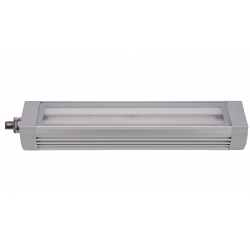
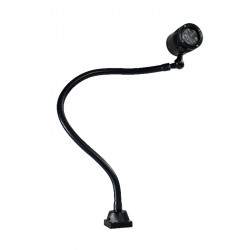
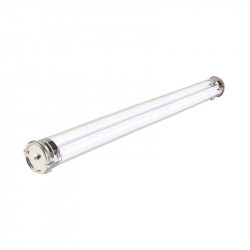
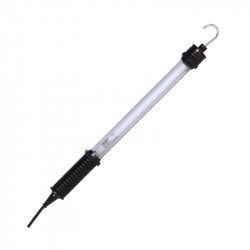
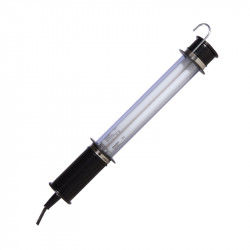
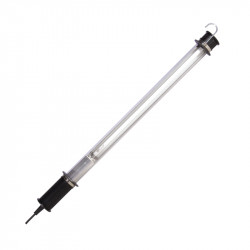
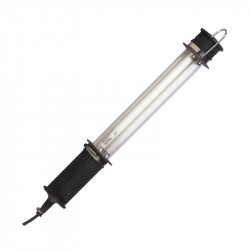
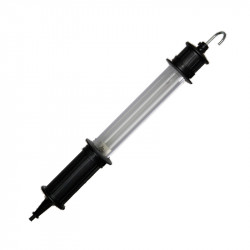
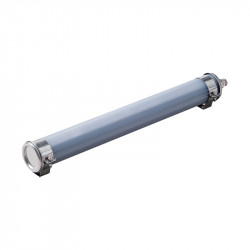
Leave a comment